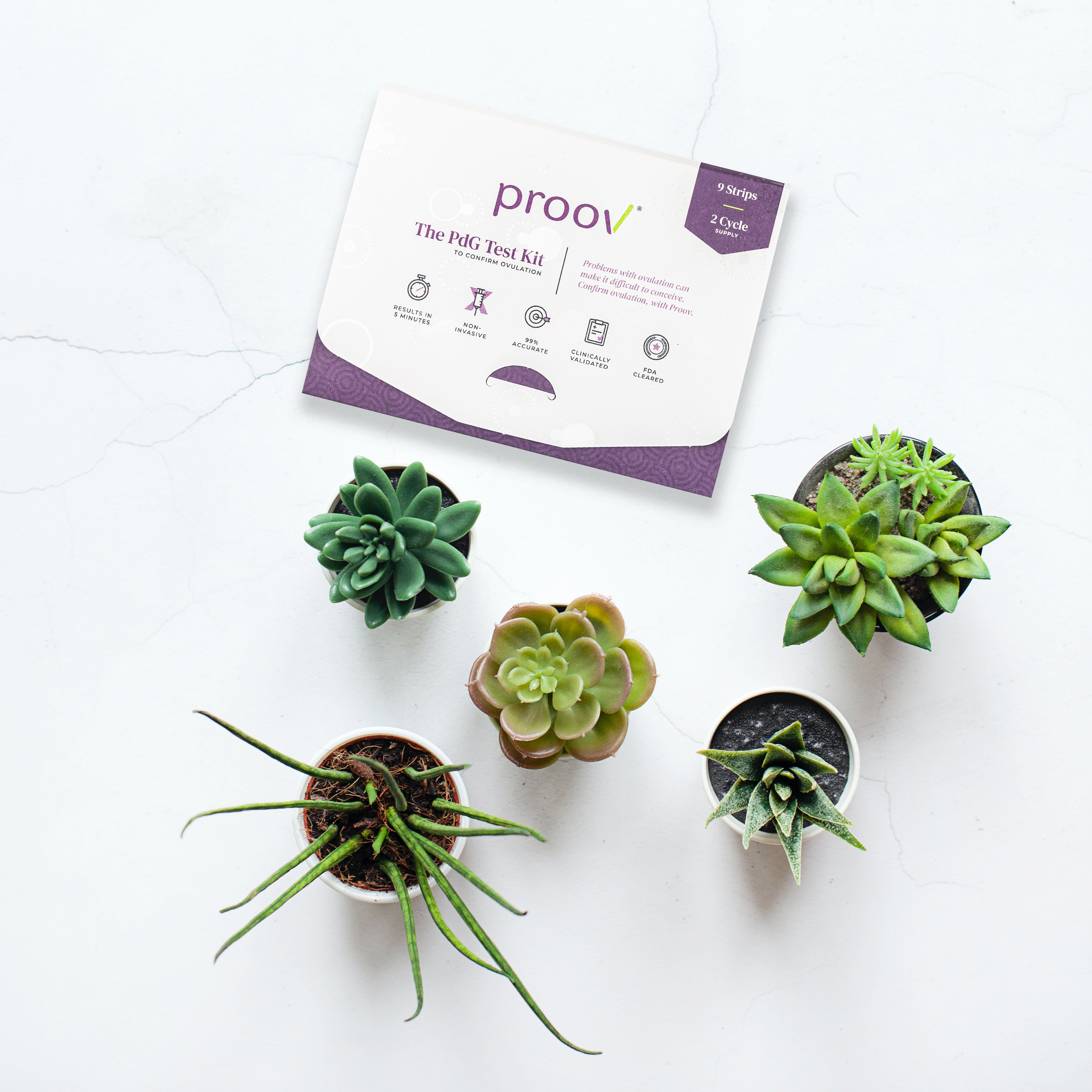
Written by: Dr. Amy Beckley, PhD, Founder and Inventor of the Proov test – the first and only FDA-cleared test to confirm successful ovulation at home.
Written on 8/8/20
There are lots of different fertility tests on the market. But how do you know which ones you should take and what information they give you?
Valuable information lies in a hormone test! In today’s blog, we’re going to break down two popular ones — ovulation and progesterone tests — so that you are empowered with more information on your TTC journey and understand LH vs progesterone!
Before we start...what’s your goal?
Likely, your main goal is to get pregnant. We want to remind you of this now and make sure you keep it in mind as you read. Before buying different TTC products you should always ask yourself, “How is this product going to help me achieve my goals?” Let’s dive in!
Check out our fertility checklist for understanding different fertility products.
Ovulation Tests
Ovulation tests measure the hormone LH in urine. LH peaks right before ovulation and is a good indicator you are about to ovulate. LH levels are highest 1-2 days before ovulation occurs, making these your most fertile days and therefore the best days to have intercourse.
A positive ovulation test means that LH is high, indicating that you’re fertile. Once you get a positive ovulation test there’s no need to continue testing — but you should start baby dancing!
However, it is possible for LH to surge without causing ovulation to occur. In fact, roughly one-half to one-third of cycles with a positive LH test do not predict ovulation within 24 hours of the surge. While there are a few ovulation tests that give a numeric value of LH, that number doesn’t really mean much if it doesn’t trigger ovulation.
Keep in mind LH tests are 99% accurate at detecting an LH surge in urine which lets you know you’re about to ovulate. But LH tests fall short of indicating if you have successfully ovulated. If you're having problems with ovulation, conception may not be possible. It takes both halves of a whole to understand your ovulation picture! Which brings us to progesterone...

Progesterone Testing
Progesterone is the hormone released after you ovulate and is necessary to prepare the uterus for implantation. Because progesterone is produced by the empty follicle (corpus luteum) after an egg has been released, it’s presence confirms ovulation. Ovulation can be confirmed via basal body temperature tracking (BBT), serum progesterone in blood, or PdG (urine metabolite) levels.
All of these tracking tools let you know whether or not you ovulated depending on the pathway in which they test. If you see a BBT rise it’s likely that you ovulated, as the small temperature shift that happens after ovulation is due to a rise in progesterone. That said, the magnitude of rise doesn’t typically correlate to a specific progesterone level. For example, if your BBT rises 0.5 degrees after ovulation and another woman sees a 1 degree rise, it doesn’t mean that your progesterone is low and hers is high. Everyone’s body is different so BBT is more helpful for providing a “yes/no” vs. specific information on progesterone levels themselves.
Similarly, a progesterone blood draw can give you a specific numeric value of progesterone in blood. Most doctors agree that over 5 ng/ml of progesterone in blood indicates ovulation, but you want levels to be a bit higher to support successful conception. Serum progesterone levels tell you an exact value, but only shows your progesterone level at one point in time, which can be inaccurate considering serum levels can fluctuate hour by hour.
PdG is a urine metabolite of progesterone, so you might consider progesterone to actually be the precursor to PdG. Tracking PdG also can help you understand if you ovulated and the even cooler thing is that because testing pee is less invasive than testing blood, you can track over multiple days. This is important because for ovulation to be “successful”, progesterone needs to go up and stay up for multiple days. Tracking PdG allows you to test on multiple days to get a clearer picture of overall ovulation health — in addition to confirming that it actually happened! Proov tests track PdG and are designed to turn positive progesterone test at the minimum amount of PdG required to confirm ovulation and are non-invasive, urine-based tests that allow for testing several days in a row.
Want to know more? Check out Why PdG Is Critical to Conception.
The Big Misconception
There is a big misconception that ovulation tests confirm ovulation. OPKs detect LH, the hormone we mentioned earlier, telling you ovulation is close by. Traditional ovulation tests are very important because timing intercourse correctly can absolutely help you get pregnant — but timing isn’t the only thing! You can get positive LH tests and have intercourse all day long, but if you’re not ovulating it’s more difficult to reach your goal. OPKs predict ovulation, Proov confirms ovulation. It’s as simple as that!
Ovulation tests and Proov make the perfect pair!
Ovulation tests make it easier to Proov! Determine your peak fertility with ovulation tests and confirm PdG levels are good to go with Proov after ovulation, days 7-10 to be exact.

Positive Proov results observed all four days during the testing window confirm “successful” ovulation. If one or more of your Proov tests were negative during the window, this might indicate a problem with ovulation that may be preventing you from conceiving. If this is the case you can either turn to natural remedies or consult your doctor for prescription level treatment.
Having a better understanding of ovulation and progesterone tests allows you to be more informed and make better decisions during your TTC journey. Using both simultaneously will get you closer to achieving your ultimate goal!














